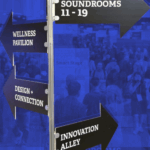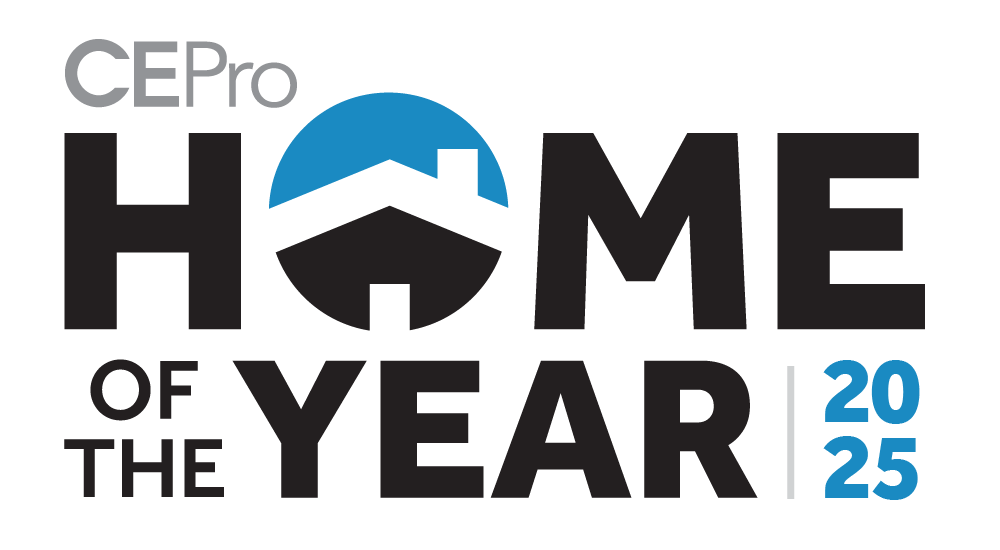One of my cohorts on the CEDIA Tech Council, Rich Green, reminded us recently about Destiny Networks, a company that was ahead of its time in hands-free home automation. Green's integration firm, Rich Green Ink in Palo Alto, Calif., recently designed and installed a hands-free huddle room and reminisced about Destiny. Here is an article CE Pro published in the November 2002 issue of the magazine, discussing smart sensors and algorithms … or what we now know as artificial intelligence (AI).
Destiny ran out of money and was acquired in 2006 by Home Director, a manufacturer of structured-wiring system that was just emerging from Chapter 11. Home Director closed for good in 2007. (See: Why Home Director Failed.)
Given the ubiquity of AI-enabled smart-home systems these days, we thought it would fun to look back 15 years when Destiny introduced its $18,000 (starting price) Ubiquity system. – Julie Jacobson
THE LOWLY SENSOR HAS LONG BEEN an insignificant blip on the automation screen—slapped on walls to detect motion, and screwed into doors and windows to catch bad guys. But one newcomer to the home-control business is making sensors the focus of its landmark automation system.
Destiny Networks, a home-technology startup based in Morgan Hill, Calif., has unveiled the Home Positioning System, which the company calls “the first and only commercially available implementation of handsfree automation for the home.”
What makes the system handsfree is a series of sensors tied to a sensor hub—the SHUB—which ultimately tells the automation software if anyone is home and, more specifically, which rooms they occupy.
Thus, the lights could go on automatically when someone enters a room, and turn off when they leave.
Sound simple? Not the way Destiny CEO Mark Stiving puts it: “It’s easy to turn lights on; it’s hard to turn them off,” he says. “We’ve figured out how to turn them off.”
Imagine the typical occupancy sensor tied to a lighting-control system. The light goes on when the sensor is tripped. But when does the light turn off? Must an idle occupant wave his hand at the PIR every 10 minutes to avoid a blackout?
Today’s residential PIR (passive infrared) sensors lack the sensitivity to constantly detect a person in a room; their key purpose is to detect a trespasser’s entrance into an area, whereupon the sensor triggers an alarm event. Since the security industry frowns on false alarms, PIRs are designed to avoid them.
But “false alarms” in lighting control are hardly hazardous. In the Destiny model, PIRs from Visonics are modified for ultra-sensitivity, so the lights won’t turn off as Mom curls up with a good book. Ultra-sensitive occupancy sensors, however, do have drawbacks. You wouldn’t want them to trigger lights on every time the wind blows.
Destiny’s solution: “When someone is in the room, the sensors go to their highest sensitivity,” explains Stiving. “When no one is in the room, they go to their least sensitive.”
 Destiny Networks at CEDIA 2002
Destiny Networks at CEDIA 2002The settings are achieved through the SHUB, which essentially evaluates how to respond to information received from sensors around the home—a “sensitive” setting means that the SHUB acts on fewer “hits” from the PIR, so the system will err on the side of keeping lights on.
If not a peep is heard from the PIR in say, 10 minutes, the Destiny system will turn lights off. Timeouts are longer for areas that are occupied vs. unoccupied, and users can change the timeouts according to the room being monitored—longer timeouts for a media room, from which users might make quick trips to the kitchen or bathroom, and shorter timeouts for the stairway.
The SHUB is much smarter than can be conveyed here, but suffice it to say that the unit and its algorithms appear to do a fine job of determining when a room is occupied, and responding accordingly with appropriate lighting effects.
The lighting effects come courtesy of third-party vendors—for now LiteTouch and Lutron–for which Destiny has written drivers. Scenes that can be accomplished with these and similar lighting-control systems can be programmed into the Destiny product, too. Combine these scenes with the magic of Destiny’s SHUB, and you can configure some pretty slick scenarios.
For example, the SHUB could be awakened from the GOODNIGHT mode when Dad gets out of bed for a midnight snack, then automatically initiate pathway lighting wherever Dad may wander, say, from the bedroom through the hallway and to the kitchen…and back again.
Behind the scenes
The heart of the Destiny system is the Domain 5000—a hefty server loaded with serial ports, networking ports, video I/Os, relays, and RF and IR accommodations.
The SHUB connects to the Domain 5000, which acts as a robust automation server in its own right, with or without the SHUB.
In fact, the SHUB and related software for handsfree operation adds about $18,000 to the dealer cost of the Destiny system. Without the handsfree component, dealers can purchase the Domain 5000 and Destiny’s Ubiquity automation software for about $3,500.
Like virtually all of its competitors, Destiny boasts that “no programming is required” for its software. In fact, system configuration does appear to be as simple as the manufacturer claims.
Once the home’s floorplan is loaded into the software, dealers simply click on the room to “place” electronics, which are then configured through drop-down menus and room-specific defaults. User interfaces are automatically generated for the automation and A/V gear selected.
“In the short term, we believe that our configurable software will be the most attractive feature of the system,” says Stiving, “but having the handsfree capability is a big deal.”
Although Destiny demonstrated its wares for the first time publicly at CEDIA Expo 2002 in September, in fact the system has been running for a couple of years in a few test homes. “The owner [of Destiny] has been living with the system for two years and hardly needs to touch a light switch,” says Stiving.
Destiny currently has 13 employees, including former executives of Cisco, 3Com and Xerox.
press release
Destiny Networks Introduces Domain 5000 Home and Entertainment Controller
CEDIA Expo, Minneapolis, MN – September 25, 2002 — Destiny Networks, the leader in handsfree automation for the home, today introduced the Domain 5000, the simplest and most powerful home and entertainment controller available. The Domain 5000 offers a wide range of standards-based communication ports and three key features to set it apart from any other.
· No programming is required.
· Controlled with a small RF remote or with a web tablet.
· Supports handsfree automation.“Destiny Networks is in the forefront with its focus on simplifying the installation and use of home technology. With their Ubiquity configurable software application running across the number of standard communications ports on the Domain 5000, the installation and ease of use is improved dramatically,” said Don Redmond, ex-VP of Engineering at Cisco Systems and Destiny Networks customer.
The Domain 5000 comes loaded with Ubiquity, Destiny Networks’ configurable software application that eliminates custom programming. By simply clicking on menus, the dealer configures both the software that controls the home and entertainment components and the software that creates the user interface for those components. This ease of configuration is true for both home control (lights, heating and cooling, fans, curtains, etc.) and entertainment control (whole house audio, home theaters).
Another unique feature of the Domain 5000 is the small handheld RF remote. Anyone that has used an LCD touch-screen to control a home theater realizes the convenience of having a remote control with physical buttons that can be found in the dark. Destiny Networks’ remote has immediate control over the common entertainment functions, but when more control is desired the user can access the complete graphical user interface on the TV screen with the touch of a button. For those who prefer a touch screen display with elegant, user-friendly graphics, home and entertainment control is also available from a browser running on a networked computer, tablet PC or web-tablet.
The Domain 5000 also offers handsfree automation. Home systems such as lighting, heating and cooling, audio and video, and curtains and windows can now simply respond to the homeowner’s presence. No interaction or thought is required.
The Domain 5000 controls entertainment systems through a combination of ten (10) independent infrared drivers and ten (10) power sense inputs that detect when the components are on or off. Entertainment components with serial ports are best driven from one of the ten (10) serial ports included on the Domain 5000. The serial ports can also be used to interface with lighting systems, thermostats, and other control modules. Twelve (12) relay ports are built-in to control a wide range of devices including fans, curtains, fountains and drop down movie screens. An Ethernet port links the Domain 5000 to the computer network.
The Domain 5000 has a 19” rack mountable chassis and comes standard with the Ubiquity software preloaded and one RF remote at a list price of $3,500. Additional handheld remotes are available for $79 each. Optional handsfree automation software for the Domain 5000 is available for $18,000. The Domain 5000 is available for shipment in December 2002.
Destiny Networks is showing the Domain 5000 at CEDIA Expo in booth #154A.
About Destiny Networks
Destiny Networks, Inc. is the leading manufacturer of handsfree automation for the home. With an intelligent sensor architecture and configurable software application, Destiny Networks’ capabilities far surpass simple monitoring and control to provide homeowners unmatched convenience, energy savings, security and entertainment.












































